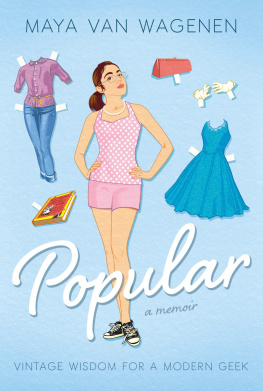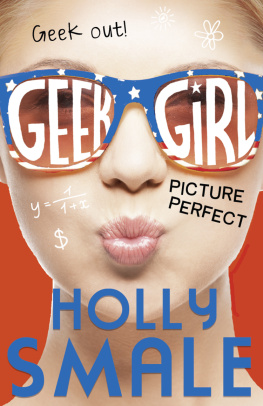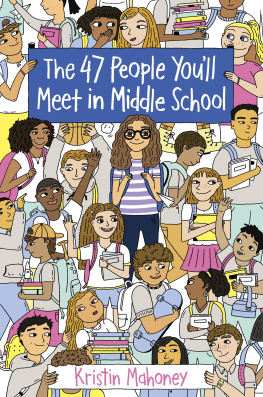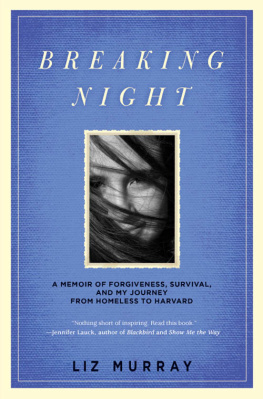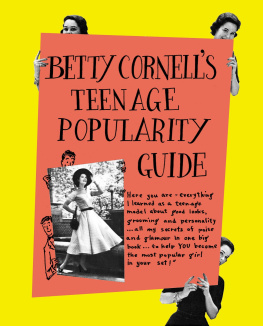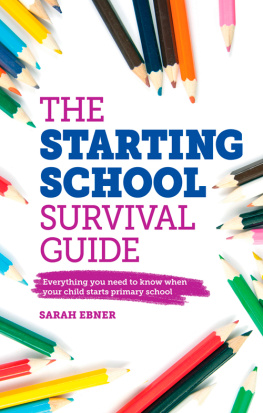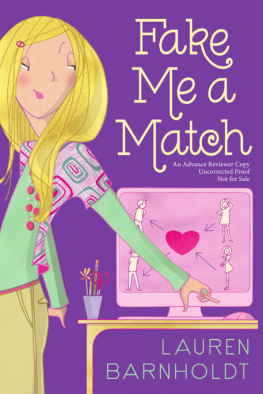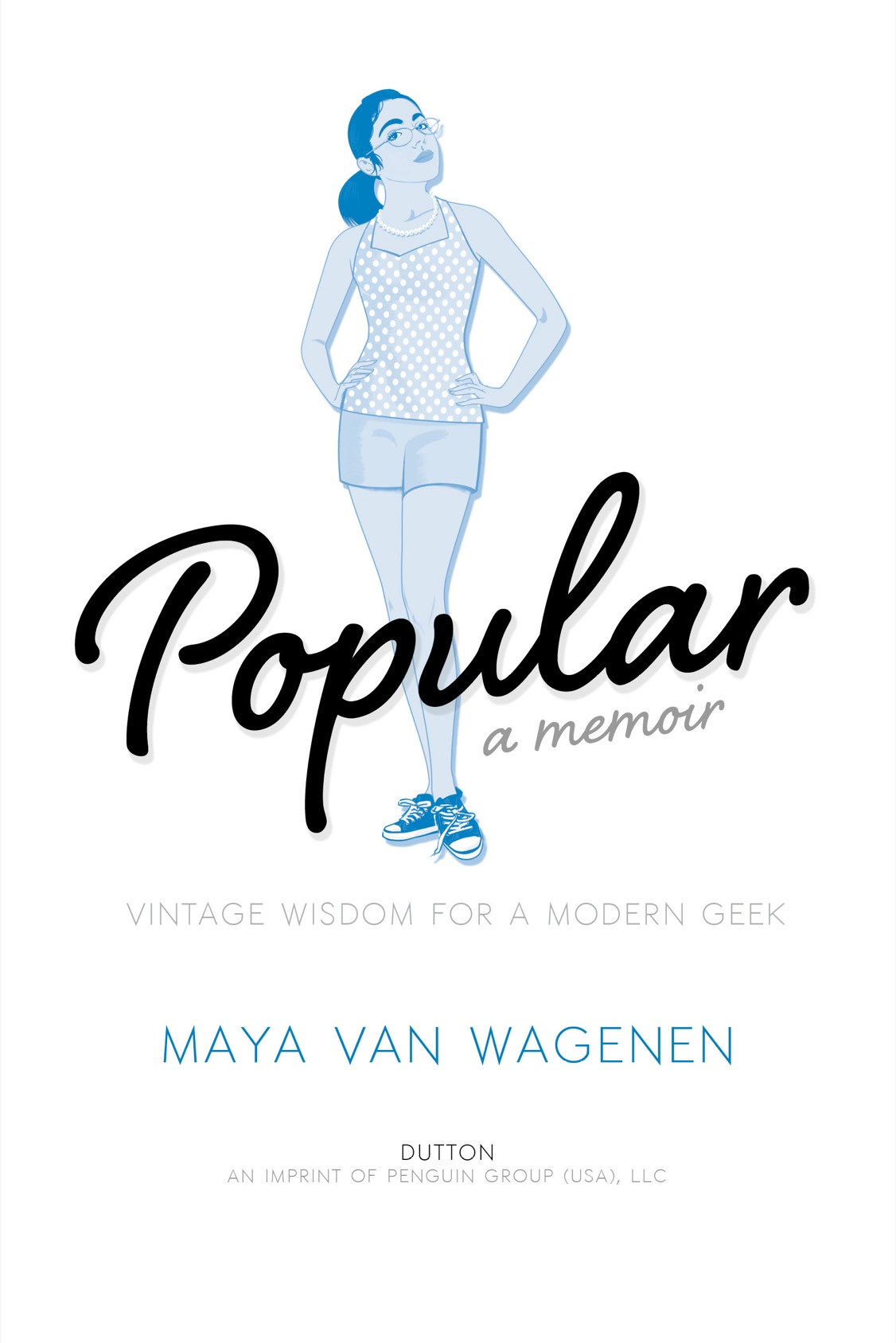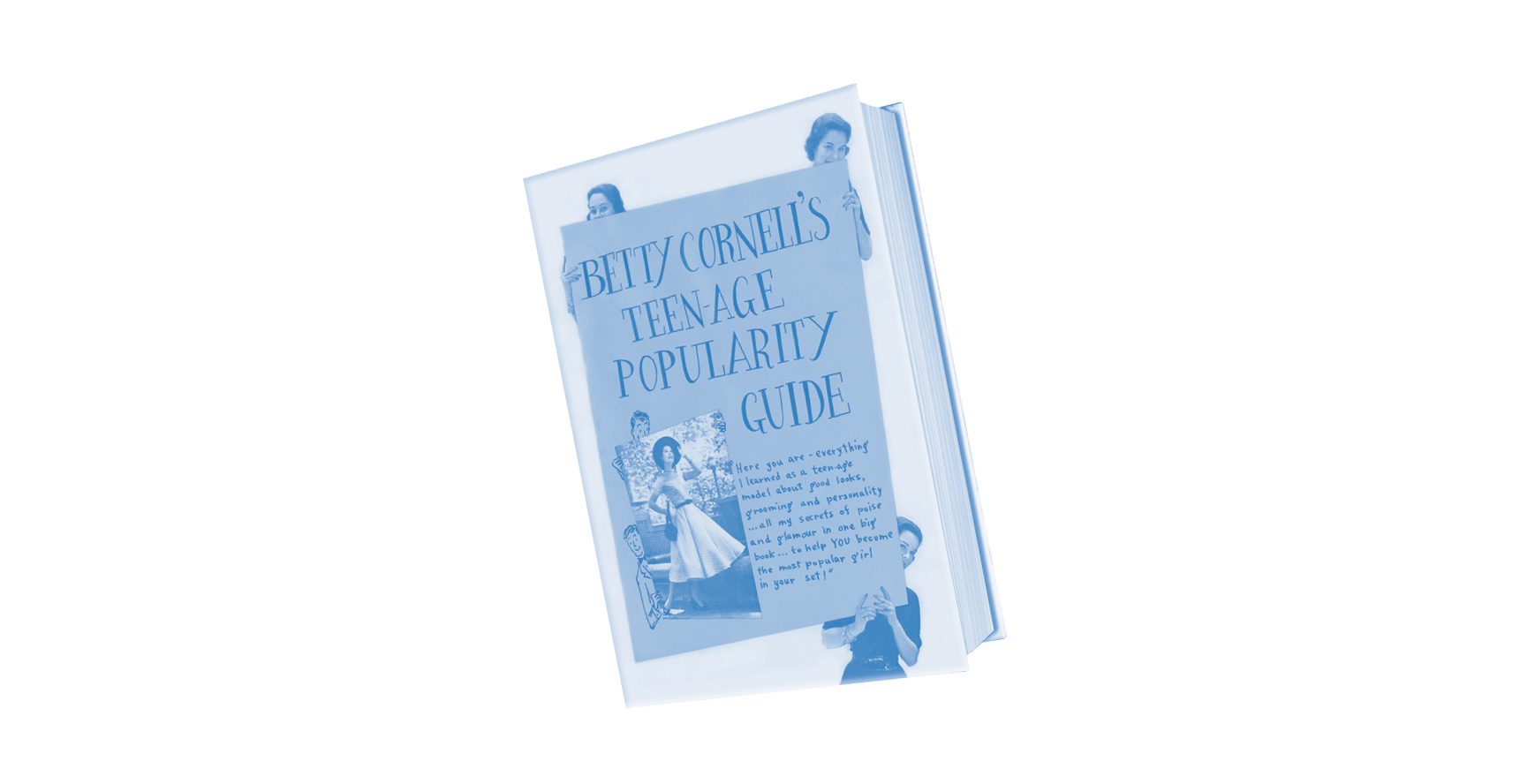DUTTON BOOKS
Published by the Penguin Group
Penguin Group (USA) LLC
375 Hudson Street | New York, New York 10014

USA | Canada | UK | Ireland | Australia
New Zealand | India | South Africa | China
penguin.com
A Penguin Random House Company
Copyright 2014 by Maya Van Wagenen
Introduction copyright 2014 by Betty Cornell Huston
Penguin supports copyright. Copyright fuels creativity, encourages diverse voices, promotes free speech, and creates a vibrant culture. Thank you for buying an authorized edition of this book and for complying with copyright laws by not reproducing, scanning, or distributing any part of it in any form without permission. You are supporting writers and allowing Penguin to continue to publish books for every reader.
CIP Data is available
ISBN 978-0-698-15341-7
The publisher does not have any control over and does not assume any responsibility for author or third-party websites or their contents.
With the exception of the authors siblings, the names of the children and most adults, as well as physical details, mentioned in the book have been changed in order to respect their privacy.
Version_1
To all those whove sat alone at the edge of the playground.
This book is for you.
Hi!
Im Betty Cornell!
I wrote Betty Cornells Teen-Age Popularity Guide in 1951. I was twenty-four. Pedal pushers were the hottest fashion trend. They hit just below the knee and were the shortest shorts around. Pleated skirts had hemlines that often fell to the ankle, and many girls knit crewneck sweaters themselves, which were all the rage. Miniskirts were still more than a decade away, and skinny jeans and crop tops were unheard of.
If you wanted a change for your hair, you got a reverse perm at the beauty salon. (There were no boxes of hair color at the drugstore, because no one dyed their hair!) To style my hair, each evening I would pin it up in rag curlers, stuffed with Kleenex to give more volume, go to bed, and wake up in the morning with the perfect pageboy hairstyle.
But today, things have changed. I walk around town and see hair in hues of blues and pinks and the fashions are more revealing. While I have witnessed many fashion trends that were considerably less modest than what I wore growing up, I have been around long enough to recognize that a huge part of fashion is pushing the limits of the past. The more things have changed, it is interesting that the core motivation to outdo the previous generation clearly remains the same, just as it was when I wrote my book. It is comforting for me to know that even though I am no longer a prominent part of the fashion world, the end goal is still the same even if the product is not.
My most vivid memories of publishing my Teen-Age Popularity Guide are of how flattered I felt whenever I received letters from teenagers telling me how much they had learned by reading my book. They told me about their clothes, their hair, and their partiesI loved hearing from them.
However, I was surprised many years later by another letter my book brought me. And this time, it was by e-mail and turned out to be the most heartwarming and profound. It came from Maya Van Wagenen in April of 2012, and she told me that I had changed her life! She had used my book for tips and hints on how to deal with the challenges she was facing in school. Remarkably she used advice I wrote decades ago and applied it in todays world. I was so delighted to know that my book had withstood the test of time and was still providing help to teenagers.
When I finished reading Mayas bookthis book you are about to read, tooI felt a cascade of feelings: pride, love, satisfaction, and happy memories. It amazed me to see Maya tell her tale with such knowledge, poise, and grace. Over the years, I have seen many good grooming and fashion trends come and go and, on rare occasion, return years later with modifications to fit the new generations taste. But I never thought when I was writing my book that the advice I offered would be made relevant sixty years later through the eyes of a new, young writer.
I began my career as a model and then found great success as an author. Maya is starting her career as an author, but she is already a model of courage and confidence for her generation and generations to come.
Introduction
(or how this whole thing came to be)
DONT SKIP THIS PART
NO REALLY, DONT SKIP THIS PART
School is the armpit of life, my best friend Kenzie once told me. Amen. My school is no exception. Walk through the scratched glass doors on that first day and your life becomes a series of brutal and painful encounters: being called a dick by the football player who sits near you in science, standing in a bra and granny panties in front of your gym locker that you cant open while the girls around you giggle and point, crying in the bathroom because you didnt know it was possible for your heart to hurt this much. There is one thing, though, that can help you navigate this sweaty, smelly underarm, and that is a careful understanding of how the social food chain is organized.
MY SCHOOLS POPULARITY SCALE
(From patricians to plebeians)
10 Volleyball Girls
9 Football Faction
8 Rich Gang Members (including More-Popular Girls Who Dress Seductively)
7 Band Geeks
6 Choir Geeks
5 Goth Art Chicks
4 Less-Popular Girls Who Dress Seductively
3 Pregnant Teens (We have two right now, a seventh and an eighth grader.)
2 Computer Geeks (There are hardly any.)
1 Library Nerds (who read constantly and love Japanese comics)
0 The Ignored (sixth graders)
-1 Social Outcasts
-2 Teachers
-3 Substitute Teachers
You are categorized by where you spend your time and with whom you do, and do not, associate. I fall into the Social Outcast group, the lowest level of people at school who arent paid to be there. Im joined in my lowly negative-digit station by my close friend and confidant Kenzie. For the most part, its a quiet, monotonous, invisible existence. That is, until you get noticed and preyed upon by someone in any of the tiers above you.
So how do those at the top work the class system to their advantage?
There are magazine articles and self-help books about what to wear, what to say, how to behave, and who to be friends with. In fact, long before I was even born, my father picked up a book at a thrift store. The faded cover was old and torn, but There was something about it, he told me. He thumbed through the pages until he came upon the title: Betty Cornells Teen-Age Popularity Guide. It was written in 1951, and was full of tips and advice on how to achieve what seemed to be the unachievable: improving ones social status. My dad said he found himself laughing right there in the store at some of the outdated ideas. It being an interesting piece of vintage pop culture, and he being my father, he bought it right away.

